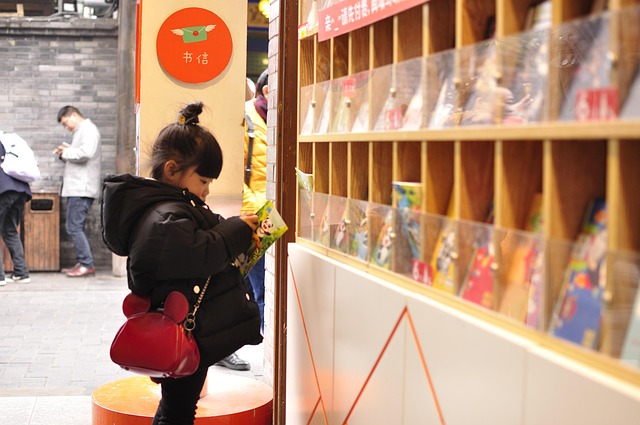In today’s rapidly evolving commercial environment, the convergence of sensor technology, robotics, and artificial intelligence is reshaping how businesses operate. Central to this shift is the concept of extended perception, a framework that enables machines to interpret complex environments with human‑like nuance. By fusing diverse sensor streams and AI analytics, organizations can automate tasks that previously required human judgment, reduce errors, and accelerate decision‑making. This article explores how extended perception is driving transformative automation across industries, the underlying technologies that power it, and the practical implications for businesses looking to stay competitive.
What Is Extended Perception?
Extended perception refers to the ability of robotic systems to go beyond basic sensory input and create a comprehensive, multimodal understanding of their surroundings. Traditional robotics often relies on a single type of sensor—such as a camera or lidar—to gather data. Extended perception integrates visual, auditory, tactile, thermal, and even chemical sensors, feeding these streams into sophisticated AI models that synthesize context, predict outcomes, and guide autonomous behavior. The result is a richer, more reliable perception that mirrors, and in some cases surpasses, human sensory integration, enabling robots to perform in dynamic, unstructured settings.
Sensors at the Core of Extended Perception
Modern sensor suites form the bedrock of extended perception. High‑resolution RGB cameras capture detailed imagery, while depth sensors and lidar provide precise spatial measurements. Tactile arrays give feedback on contact forces, and force‑torque sensors detect subtle interactions. Thermal imaging reveals temperature gradients, useful in quality control, while ultrasonic sensors assist in obstacle avoidance. Recent advances also include gas sensors that can detect volatile organic compounds, enabling robots to monitor air quality or identify chemical leaks. By combining these heterogeneous data sources, a robot can construct a multidimensional map of its environment that informs every decision it makes.
Integrating AI with Sensor Data
Artificial intelligence transforms raw sensor signals into actionable intelligence. Convolutional neural networks (CNNs) process visual feeds to recognize objects, while recurrent neural networks (RNNs) analyze sequential data such as audio or motion patterns. Graph neural networks (GNNs) map relationships between objects in space, supporting path planning and collision avoidance. Moreover, reinforcement learning enables robots to learn optimal actions through trial and error, constantly refining their perception models. The fusion of these AI techniques with real‑time sensor input allows extended perception systems to adapt to new scenarios, correct errors, and anticipate future states, thereby improving both accuracy and efficiency.
Robotics Use Cases in Business Automation
- Warehouse picking and packing: Robots equipped with extended perception can locate items, assess weight, and navigate aisles autonomously, reducing order processing times.
- Manufacturing inspection: Vision systems combined with vibration sensors detect defects early, enabling predictive maintenance and reducing downtime.
- Healthcare logistics: Automated guided vehicles (AGVs) transport supplies across hospitals, using lidar and thermal sensors to avoid obstacles and maintain sterile conditions.
- Retail shelf management: Robots monitor inventory levels in real time, adjusting restocking schedules and providing data analytics to store managers.
- Agricultural monitoring: Drones and ground robots use multispectral imaging and soil sensors to optimize crop yields and detect disease outbreaks.
Across these scenarios, extended perception empowers robots to interpret complex, changing environments with minimal human intervention, unlocking new levels of productivity.
Benefits to Operations and Workforce
Implementing extended perception in automation delivers measurable advantages. Operationally, businesses experience higher throughput, lower error rates, and improved safety as robots handle repetitive or hazardous tasks. Cost reductions arise from fewer manual labor hours, less material waste, and proactive maintenance schedules informed by sensor data. From a workforce perspective, employees can shift focus from routine chores to higher‑value roles that require creativity and judgment. Moreover, the data generated by these systems feeds into analytics platforms, enabling continuous improvement of processes and informed strategic decisions. Together, these benefits foster a resilient, future‑proof organization.
Overcoming Implementation Challenges
Adopting extended perception is not without obstacles. Data integration from heterogeneous sensors demands robust middleware and standardized protocols. Ensuring real‑time processing while maintaining accuracy requires powerful edge computing solutions or cloud connectivity, which may raise latency concerns. Security is paramount, as sensor networks can be vulnerable to tampering or cyber‑attacks. Additionally, the initial capital outlay for advanced sensors and AI infrastructure can be significant. Successful deployment typically involves phased pilots, careful vendor selection, and close collaboration between IT, operations, and cybersecurity teams to align technology with business objectives.
Case Study: Warehouse Automation
Consider a mid‑size e‑commerce fulfillment center that recently integrated an extended perception system into its robotic fleet. Each robot is equipped with stereo cameras, lidar, and force sensors, all feeding into a cloud‑based AI platform that continuously updates object recognition models. During a six‑month pilot, the warehouse achieved a 30% reduction in picking errors, cut average order processing time from 45 minutes to 28 minutes, and lowered worker injury reports by 18%. The insights gathered from sensor logs also revealed bottlenecks in the shelving layout, prompting a reconfiguration that further improved throughput. This example illustrates how extended perception can yield tangible, rapid returns on investment.
The Future Landscape: Trends and Innovations
Looking ahead, several emerging trends will deepen the impact of extended perception. Edge AI chips enable more complex algorithms to run locally, reducing dependence on cloud connectivity and improving privacy. Sensor fusion frameworks that automatically weigh data quality will streamline development. Autonomous swarms—groups of lightweight robots coordinating via shared perception—could revolutionize tasks such as inventory surveying and disaster response. Finally, regulatory frameworks for AI ethics and data governance will shape how businesses deploy these technologies responsibly, ensuring that automation benefits all stakeholders.
Conclusion
Extended perception represents a pivotal leap forward in the intersection of sensors, robotics, and artificial intelligence. By weaving together diverse sensory inputs and intelligent analytics, businesses can unlock unprecedented levels of automation, accuracy, and agility. While challenges exist—particularly around integration, latency, and security—the rewards are compelling: faster operations, smarter decision‑making, and a workforce freed to focus on innovation. As sensor technologies evolve and AI models become more sophisticated, the promise of extended perception will only grow, heralding a new era where machines perceive, learn, and act with a depth that rivals—and in many contexts surpasses—human capability.



